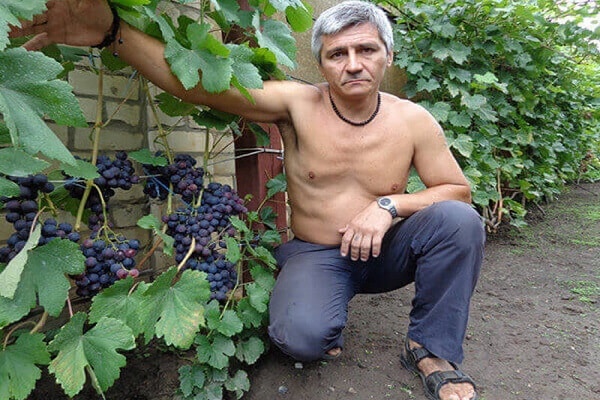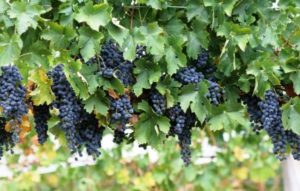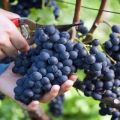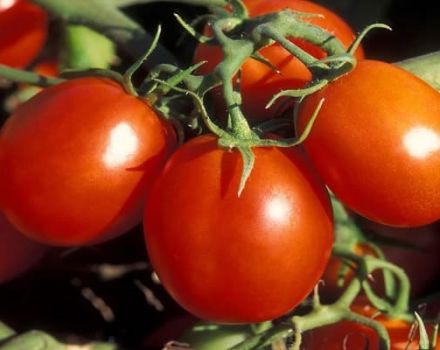Description of the Rochefort grape variety, fruiting characteristics and breeding history
It is difficult to surprise modern gardeners with worthwhile options among the varieties of fruit and berry crops. The excellent taste of the rather young Rochefort grapes made it a popular planting in many summer cottages. Large bunches, dessert berries, unpretentious care, frost resistance are a small part of the advantages of the reference variety.
Description and characteristics of the variety
The Rochefort variety appears in 2002. E. G. Pavlovsky crossed two varieties of grapes: Talisman and Cardinal. The result is a new, unpretentious look with many advantages.
A detailed description of the variety includes the characteristics of external signs, taste, characteristics of the variety:
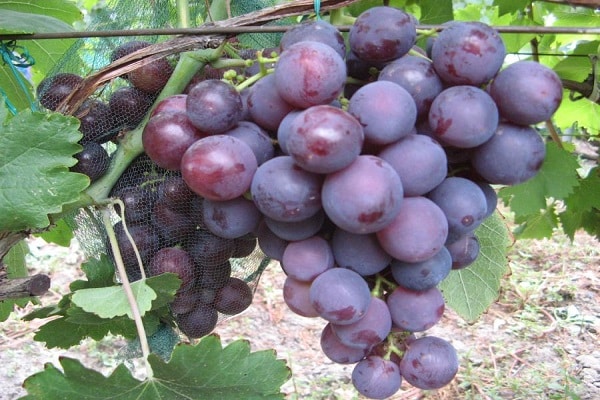
- The vine is flexible, vigorous. The maximum height is 135 cm.
- Conical clusters are large. The weight of one is from 500 to 1000 g.
- The berries are large. The average weight of one grape is 8-13 g.
- The variety is highly resistant to cold weather. The general indicator of frost resistance is up to -21 degrees.
- Dessert fruit taste. They have a special nutmeg aroma.
Important. The color of the berries varies from dark red to black, depending on the degree of ripeness. This must be taken into account when harvesting.
Due to its high taste, the Rochefort variety is considered a benchmark in the field of winemaking.
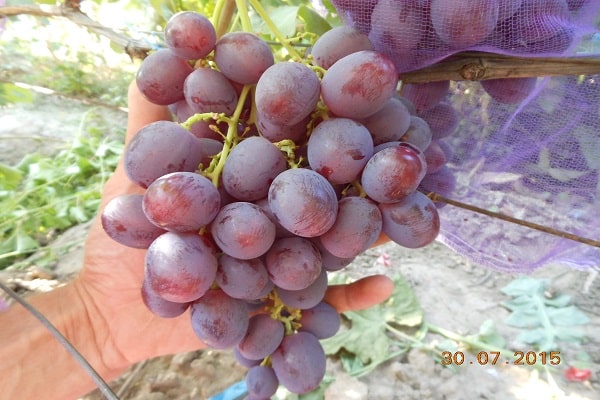
Variety yield
The Rochefort variety is considered early. The flowering period is June. The first berries ripen in early August. No additional pollinators are required for fruiting. One bush yields 4 to 6 kg of ripe grapes. With good care and favorable climatic conditions, these figures can increase to 10 kg.
Features of planting and care
Rochefort grapes are unpretentious. Planting and leaving will not require a lot of time and money.
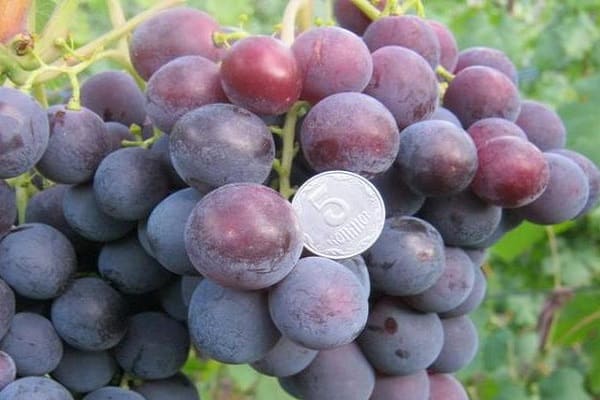
Landing rules
During the landing of Rochefort, several rules must be followed:
- Choosing a location is an important step. The further development of the plant depends on the correct location of the grape bush. The variety prefers a sunny area without drafts and winds.
- The seedlings are planted in spring. Autumn planting should be carried out in October so that the plant has time to adapt before the onset of the first frost.
- A pit for a seedling is prepared in advance. The deepening should be at least 80 cm. A mixture of soil and organic fertilizers is poured inside. The seedling is lowered into the hole, a wooden support is installed, covered with earth, and watered with warm water.
Important. The groundwater depth should not exceed 2 m.
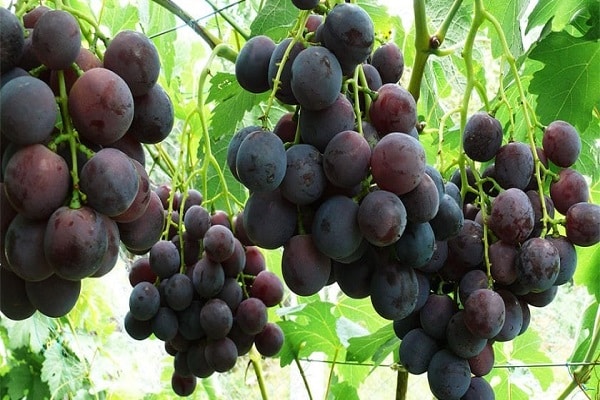
Watering and mulching
Watering Rochefort should be regular.To do this, follow simple recommendations:
- After planting, the grapes are watered every week. Then - once every 14 days.
- In drought conditions, abundant moisture is carried out more often.
- During the flowering period, the planting is not watered. This will prevent the flowers from falling off.
- Watering should be maximum during the ripening period.
Moisture in the soil is retained by mulching. Straw, sawdust are best suited for these purposes.
Important. In the northern regions, mulching will cool the grape root system.
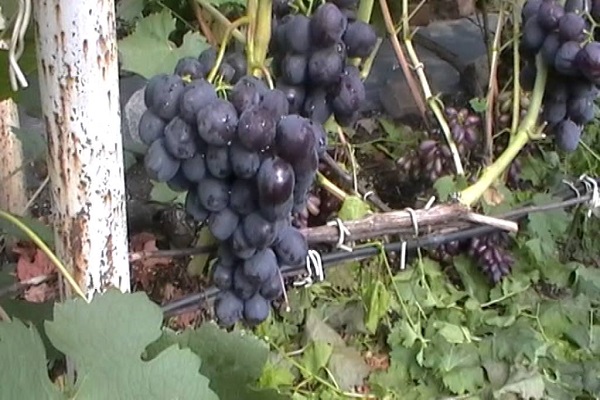
Pruning grapes
Pruning is carried out twice a year:
- In the spring, when the temperature reaches +5. Cut off branches that are frozen in winter.
- In the autumn before the onset of the first cold weather.

Disease protection
The main plant disease that affects Rochefort grapes is powdery mildew. It penetrates through the leaves, quickly spreads to shoots, flowers. The main method of control is spraying with a sulfur solution. The bush is processed within 20 days.
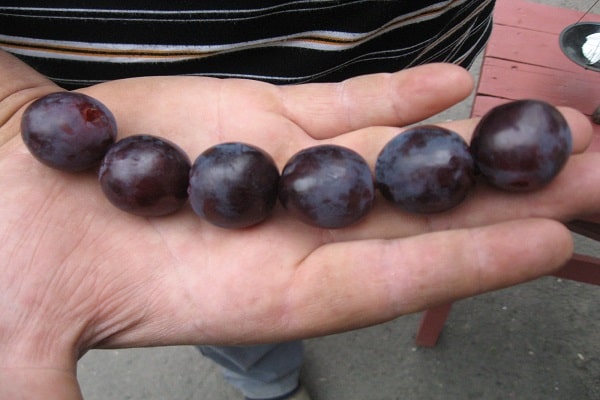
Pest control
Filoxera is a common pest of Rochefort grapes. The insect damages roots, leaves, shoots. An infected plant cannot be treated. It is destroyed. An important preventive measure is the implementation of prophylaxis.
Parsley is planted next to the grape bushes. She repels the pest. The planting is sprayed with special insecticides.
The Rochefort grape has many benefits. The excellent taste of the fruit, easy care, the ability to withstand low temperatures made the variety popular among summer residents and commercial gardeners. Large, sweet bunches are considered a great summer dessert.
